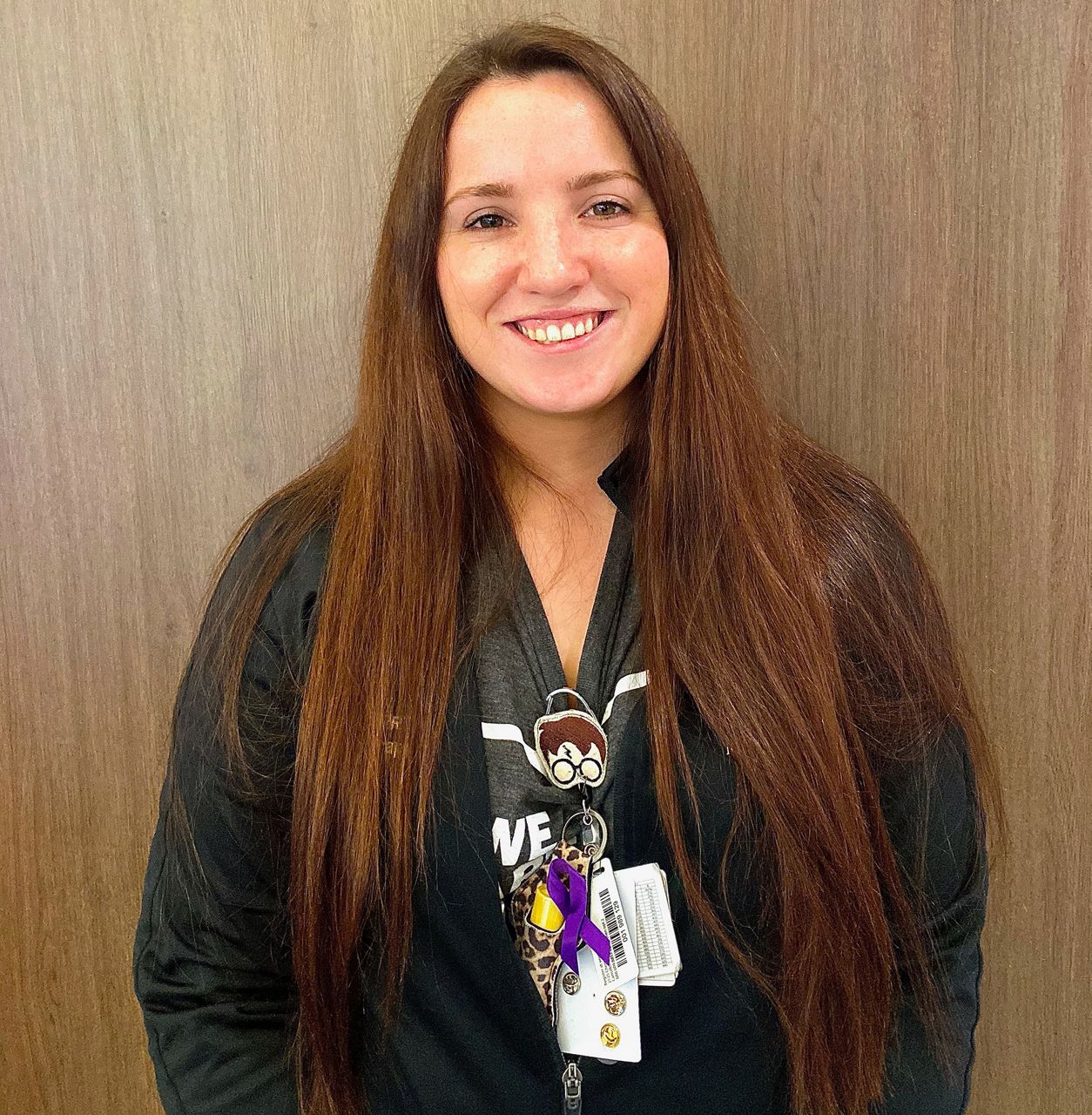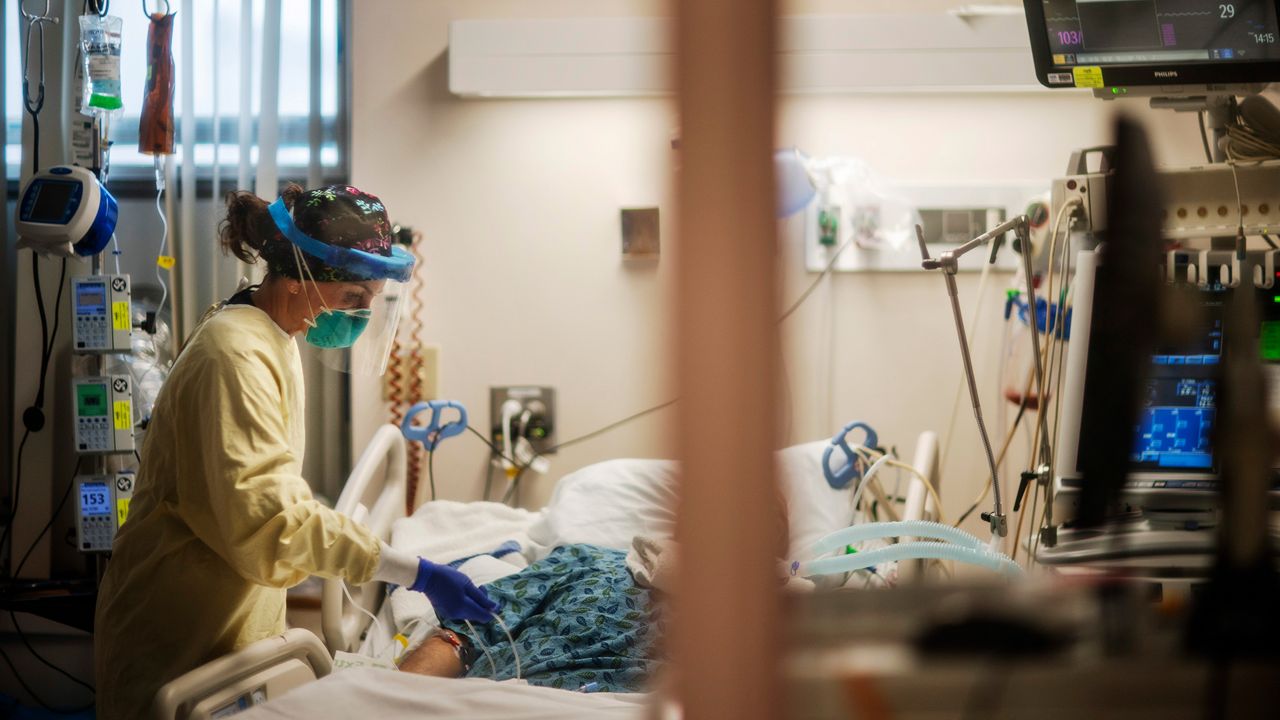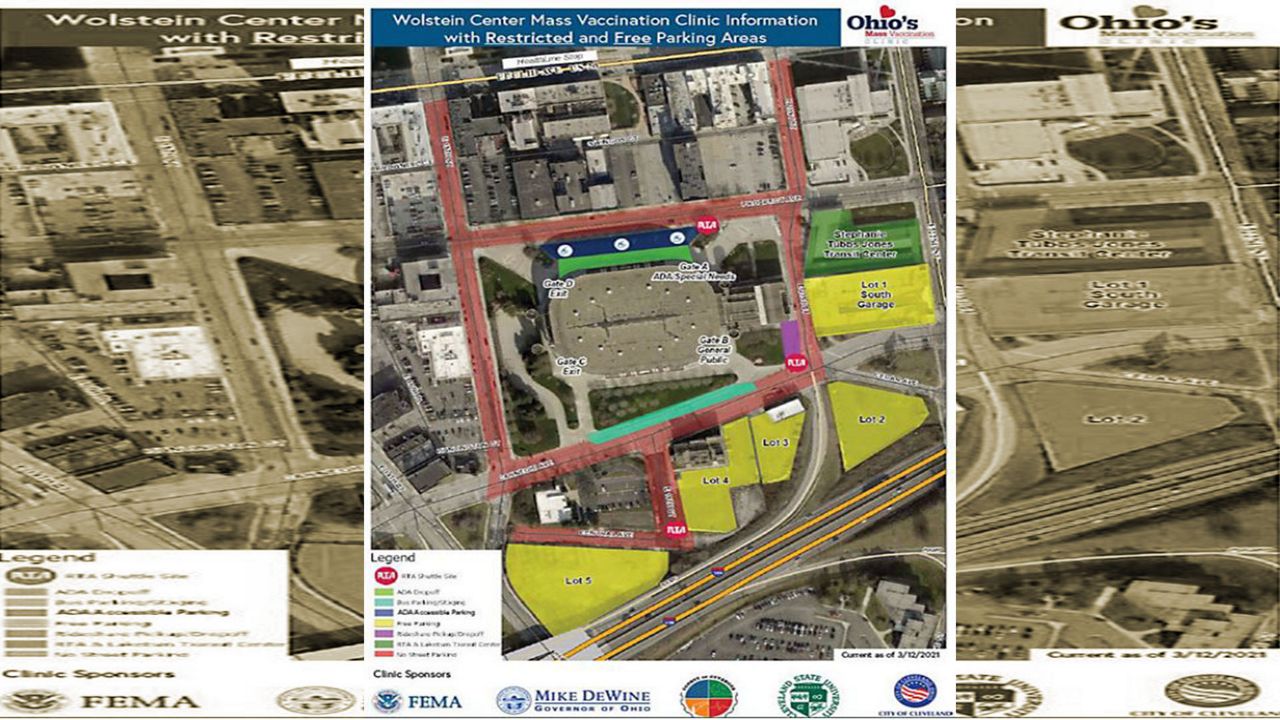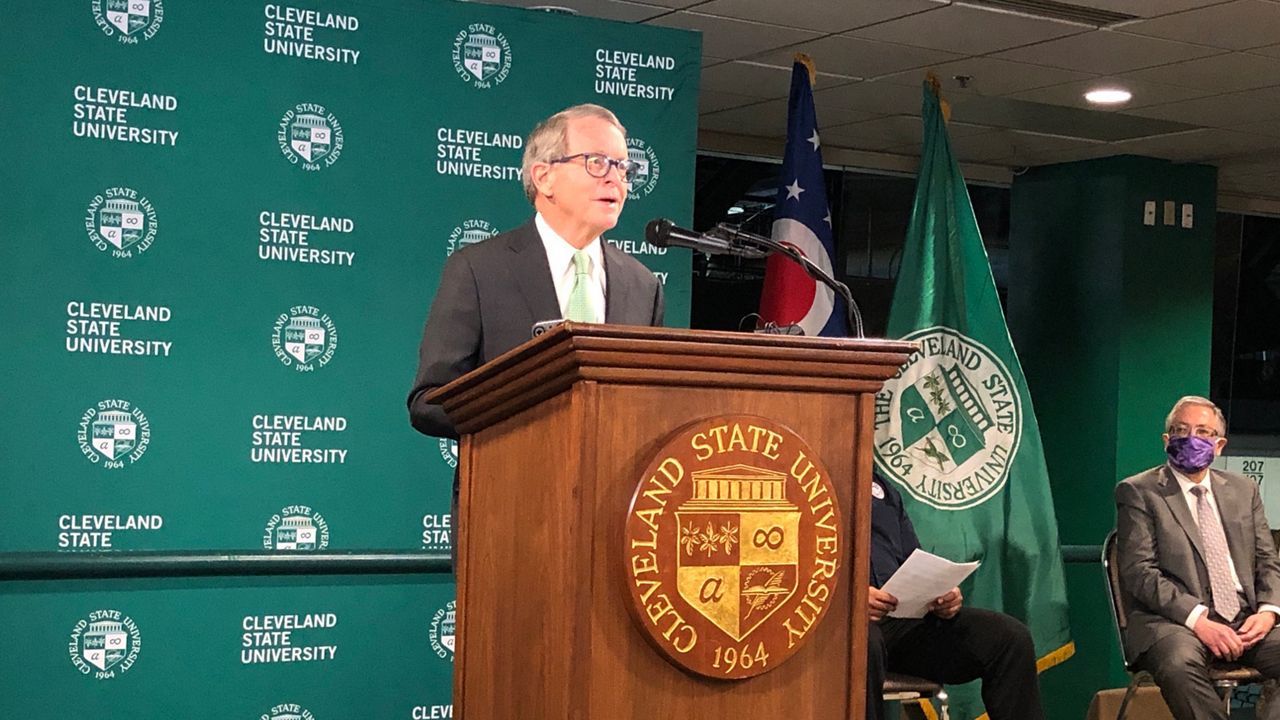COLUMBUS, Ohio — While the state phases back to a more normal way of life — and possibly a summer without COVID-19 restrictions — health care professionals on the frontlines said a severe population of critically ill patients remains, and they warn the health crisis is anything but over.
Hospitals have more therapies at their disposal for COVID-19 patients a year into the pandemic. However, according to infectious disease experts, some patients infected with the virus don’t seem to respond to the treatments, and the health care workers remain busy in coronavirus wards.
Rachael Woodring, 24, a respiratory therapist who cares for COVID-19 patients at Mount Carmel East in Columbus, said the shifts still feel busy.
“I feel like our ICU is still the same. Sometimes, we’ll have to put two respiratory therapists in our COVID ward,” she said. “Right now, I don't feel like it's as busy, but it goes up and down all the time. It’s not consistent.”

Fewer hospitals said they are experiencing critical staffing needs today than two months ago, but nurses and respiratory therapists are still in high demand due to extra strain from the pandemic.
When the virus arrived in Ohio, Woodring recalls a conversation among her fellow respiratory therapists at the hospital. Some feared contacting the virus if they worked the ICU, and worried because they had young kids at home, were 60 and older, or at-risk with underlying health issues.
The Columbus State Community College graduate from Grove City, Ohio passed her exams in January 2020 and started working full time in the ICU after graduation, just weeks before COVID-19 patients were admitted.
From the very first day, the unit was bustling, and the job, taxing.
“I felt like I was prepared for ICUs, but nobody was prepared for COVID,” she said. “The first day I walked up to the COVID ward and opened the doors — and it was almost like a scene out of a movie — people running around, putting their PAPR on, you know, full bodysuits, something I never thought that I would see.”
Woodring said she was confident in her training and had good experience working in emergency and ICU departments, but the pandemic caused her to second guess everything.
“I got thrown in the COVID ICU and I felt like I knew nothing, but I really, I truly did,” she said.
That first day, she took a moment, stepped aside, and composed herself as she got into a familiar routine: N95, scrub cap, goggles, gown, gloves, “even shoe coverings.”
She started making the rounds with her patients. In a COVID ICU, most patients need care from a respiratory therapist in the room every four hours, or more frequently if they’re deteriorating, she explained. The therapist helps manage the patient’s breathing equipment, transferring patients back and forth between BiPAP and Airvo breathing machines, and managing ventilators for patients on the edge.
On the worst day, her unit intubated five people before lunch, she said.
“We just had patients coming in next after next,” she said. “It’s tricky because they were very, very sick and we have never seen anything that affects the lungs the way that did.”
It took a toll on her personally seeing so much suffering in the ward, made even harder knowing the patients are going through their battles alone. Her manager gave her a day to collect herself.
“It is a lot. You know, these people are without their family, and it's not about me. It's about them, seeing what they're going through,” she said.
An average of 47 people are dying each day in Ohio, according to the 7-day average. On Wednesday, 862 people were hospitalized.
As of Tuesday, 15% of hospitals are experiencing continued staffing needs for nursing, according to the Ohio Hospital Association, which began tracking key pandemic health care metrics last spring in its data resource tracker, spokesperson John Palmer said. The number has improved as hospitalizations have fallen in the state, dropping from a peak around the holidays of about 40%.
“There are also hospitals indicating what we call ‘other critical health care personnel needs,’ and about 12% of our hospitals are reporting needs in those areas,” Palmer said. “The surge definitely saw a lot of increases, but right now, it's back to where it was during kind of low-peak times for the pandemic.”
Even with a growing toolkit of therapies, hospitals are still having a hard time treating very ill patients who don’t always respond to the therapies.
Case Western Reserve University Pathology Professor Dr. Christopher King diagnosed one of the first COVID-19 patients in Ohio in February at the VA Medical Center in Cleveland, where he is still caring for COVID-19 patients as an infectious disease physician.
“I've been taking care of them ever since,” he said. “From the clinical perspective, it was very scary the first several months doing it, because we really didn't know how to optimally treat patients.”
Before drugs, including steroids, Remdesivir, and Dexamethasone became widely used for critical patients, COVID-19 wards tried to do what they could, repositioning patients in prone positions, conducting bronchoscopies and bedside tracheostomies, trying to help patients whose lungs began to fail.
King said the fall and winter surge in Ohio brought unprecedented patient flow to the hospitals.
“When (infections) shoot up like that, it's relatively scary because you have so many people coming into the hospital with a diagnosis of COVID,” he said. “When you have your ICU full of people that are critically ill, often on respirators or high-flow oxygen, people are working constantly, and then, of course, you've got to wear your protective gear and everything else. It's quite exhausting.”
In the spring, the lack of good, validated therapies kept medical teams up at night, making do with the available tools, King said. Thirteen months after his first diagnosis, now he is trying to figure out what to do with the patients who won’t get any better despite the therapies.
“We can really manage the majority of people that are quite ill when they come in,” he said. “Some of the most challenging cases were people that didn't seem to respond to the therapy and continued to have virus levels.”
Often these are patients with comorbidities. The virus can cause inflammation of the “whole body physiology,” meaning so many underlying conditions could be behind a patient’s bad response to the infection.
As an infectious disease doctor, it’s King’s job to make sure patients are on the right treatments. During the pandemic, that often meant coming in late at night trying to help a complicated patient get on the track to recovery. He recalls one COVID-19 patient in June who had chronic leukemia, and he wouldn’t produce any antibodies despite the standard therapies.
After a long night working to get approvals for a novel treatment, shipping it in from another part of the country, making sure it matched the patient’s blood type, he became the VA’s first convalescent plasma patient, which seemed to finally weaken the virus’ effects.
The therapeutics, ventilatory care and oxygen support, as well as good, focused care is what makes the biggest difference in patient outcomes, he said. This takes enormous resources, and when a surge of patients come in at once, resources become stretched thin, not just for COVID-19 patients, but for everyone in the hospital, King explained.
“Now, the coming down, I think, is very promising,” he said. “But certainly, if we're not careful at this point, I agree with what the public health officials are saying that we could see a rebound until we get more people vaccinated.”
Hospitals are allowing visitation with fewer restrictions and resuming elective procedures. But from caring for outpatients in need of treatment for post-infection inflammation to addressing the myriad of health setbacks in non-COVID patients, while still caring for hundreds of complicated COVID-19 patients, the fight goes on for Ohio hospitals.
"You put out one fire and you take out another in health care,” Palmer said.







